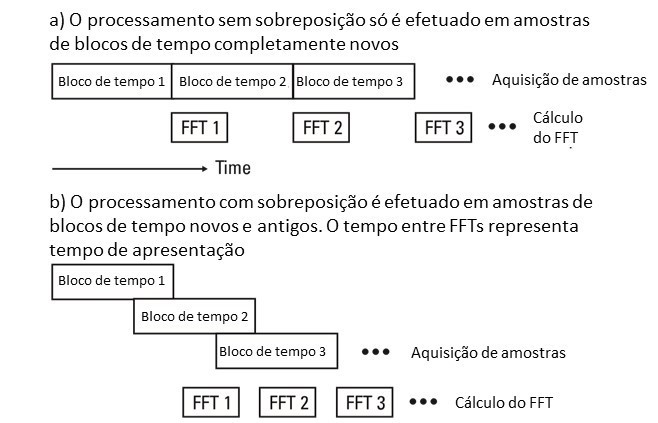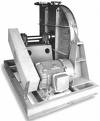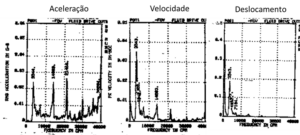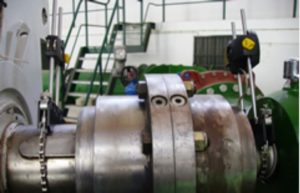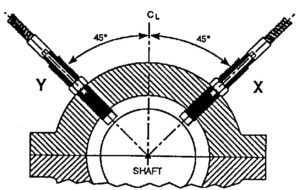Vibration analyzer 8 – overlap processing (overlap)
The specific topic dealt with in a vibration analyzer 8, consists of overlapping processing (“overlap”).
When it takes place
Vibration Analysis, to take advantage of the full potential of a vibration analyzer, you need to understand how it works. Therefore, here are presented the concepts of digital signal analysis, currently implemented on an FFT vibration analyzer, from the user's point of view, in a vibration analyzer when performing
predictive maintenance.
We begin by presenting the properties of the Fast Fourier Transform (FFT) on which Vibration Analyzers are based. Then, it shows how these FFT properties can cause some undesirable characteristics in the analysis of the spectrum, like aliasing and breakouts (leakage). Having presented a potential difficulty with the FFT, shows what solutions are used to make vibration analyzers practical tools. The development of this basic knowledge of the characteristics of the FFT makes it simple to obtain good results with a vibration analyzer on a wide range of measurement problems.
Here you can see the range of
Vibration analyzers made available by D4VIB.
-
-
-
- What is the relationship between time and frequency
- How sampling and scanning works
- What Aliasing is and what effects it has
- How it is used and what the zoom consists of
- How waveform windows are used
- What are averages for
- What is real-time bandwidth
- What overlay processing is for (“overlap”)
- What is order tracking
- What is envelope analysis
- The two-channel functions in the frequency domain
- What Orbit is for
- What are the functions of a channel in the time domain
- What the Cepstro consists of
- What are the units and scales of the spectrum
Here you can see the range of
Vibration analyzers made available by D4VIB.
8 – Vibration analyzer 8 – Overlapping processing (“overlap”)
The situation in which the FFT calculation has a longer duration than the time in the block of time was referred to above.. Now, you will see a technique, referred to as “overlap processing”, which can be used when calculating the FFT takes less time than acquiring the time block.
In vibration analyzers this is especially interesting, when it takes place
measuring vibrations, when it takes place, in which the waveform acquisition times, can be long.
To understand overlay processing, one will look at the Figure 8.1 a). We see a low frequency analysis in which the collection of a time log takes much longer than the FFT calculation time. The FFT processor is waiting most of the time. If instead of waiting for a totally new time record, I know
overlay the new time stamp with some of the old data, a new spectrum will be obtained as often as the FFT is calculated. This processing of
overlap is illustrated in Figure 8.1 b. To understand the benefits of overlay processing, you will see the same cases that were used behind.
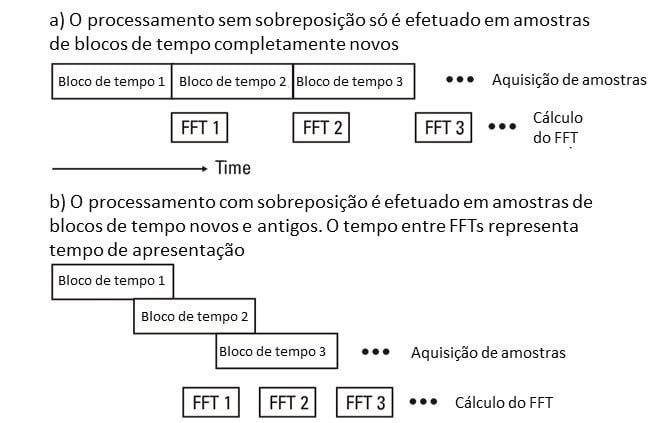
Vibration analyzer 8 – Figure 8.1 – Overlapping processing (overlap)
8.1 Observe a change in speed on a machine
It was seen in the last section, that a new spectrum is needed every few tenths of a second when observing a machine, in speed variation. No overlay processing, this limits our resolution to a few Hertz. Effectively when going to higher resolutions the vibration analyzers are very slow, because of the long duration of acquiring a block of time. With overlay processing the resolution is unlimited. However, this has limitations. Since the overlapping time log contains old data from the previous speed, he is not completely correct. It indicates the direction and amount of change, but a full-time record must be expected after the change so that the new spectrum is accurately displayed.
However, by indicating the direction and magnitude of the changes every few tenths of a second, overlay processing helps to visualize machine spectra in varying speed.
8.2 Average RMS
Overlapping processing can give dramatic reductions in time to calculate the RMS averages with a given variation. Remember that the window functions reduce the effects of leakage, weighting the ends of the time register to zero. The overlay eliminates most or all of the time that would be wasted taking that data. Since some overlapping data is used twice, more averages should be taken to obtain a certain variation than in the non-overlapping case. Figure A 8.2 shows the improvements that can be expected by the overlay technique.
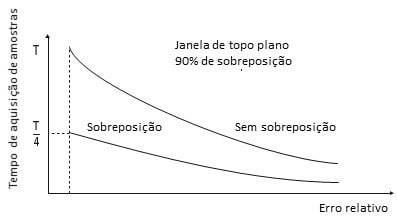
Vibration analyzer 8 – Figure 8.2 Speed improvement of the average RMS with overlap processing.
8.3 – Vibration analyzer 8 – Transient Events
For transients shorter than the time block duration, overlay processing is useless. For transients longer than the time block duration, the real-time bandwidth of the analyzer is usually a limitation. If not, overlap processing allows more spectra to be generated from the transient, generally improving the resolution of the resulting graphics.
 Vibration analyzer 8 – Figure 8.1 – Overlapping processing (overlap)
Vibration analyzer 8 – Figure 8.1 – Overlapping processing (overlap)
 Vibration analyzer 8 – Figure 8.2 Speed improvement of the average RMS with overlap processing.
Vibration analyzer 8 – Figure 8.2 Speed improvement of the average RMS with overlap processing.

